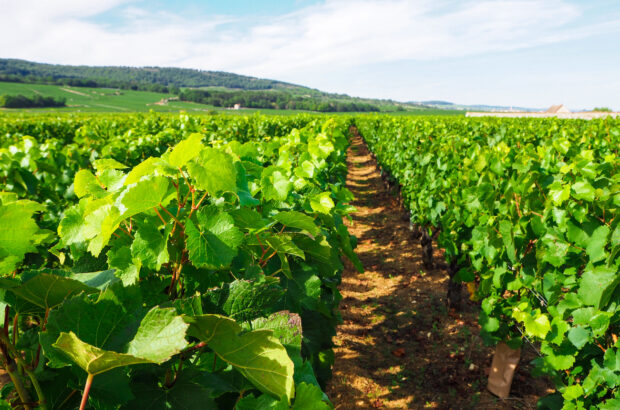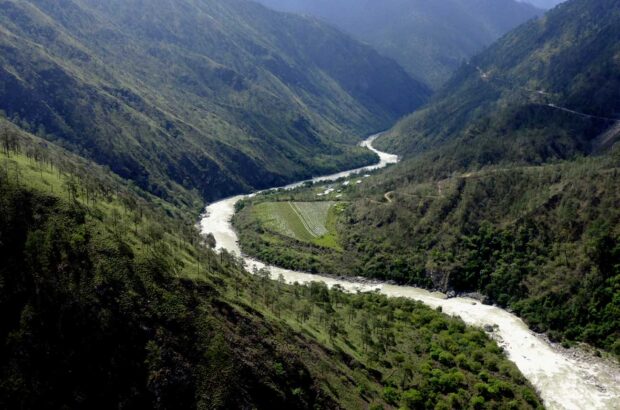Following record low yields for the 2023 harvest, there were high hopes for a stable 2024 vintage in Argentina – but nature had other plans. Erratic weather resulted in one of the most unpredictable seasons in recent memory.
The Zonda wind – the hot, dry gale that swoops down from the Andes – took an usual turn from September. Pablo Richardi, winemaker at Flechas de los Andes explains that ‘it wasn’t so much the intensity of the Zonda as its persistence. We had three days of wind when the vines were already vulnerable, with tender buds and leaves. The wind reduced the canopy and dried out plant tissues, making them less productive’.
The weather was cool and dry until mid-January when a heat wave saw temperatures hit 40 degrees, hastening ripening in vineyards all around the country. In some places the heat was so intense that vines shut down.
Low yields, but not as low as 2023
Vines were already fragile going into this tricky season, courtesy of the late spring frosts in the preceding vintage. ‘The 2024 harvest produced more fruit than last year, but it was still 15% below average,’ said Germán Di Césare, chief winemaker at Bodega Trivento.
A cool, dry spring in Mendoza and the rest of Cuyo saw significant snowfall accumulate in the Andes mountains. The subsequent snowmelt swelled rivers to a degree not seen in many years. This is significant in Argentina, where the majority of vineyards rely on irrigation.
Perfect balance
Alejandro Vigil, President of Wines of Argentina and the winemaking director at Catena Zapata, said, ‘The 2024 harvest was quite unusual. Although it was hot overall, we experienced “high lows” rather than extremely “high highs”. As a result, sugars that concentrated during the day were consumed overnight, with acidity retained, providing perfect balance. This vintage is extremely encouraging. The incredible whites and reds from high, cool areas remind me a lot of the extraordinary 2021 vintage.’
‘The incredible whites and reds from high, cool areas remind me a lot of the extraordinary 2021 vintage.’
Mendoza
Di Césare reported, ‘The vineyards all across Mendoza are remarkably healthy. Uco Valley sub-regions had their differences, depending on the impact of the preceding season’s frosts and how the vines bounced back. Overall, we saw low yields but excellent concentration among the reds.’
Pablo Durigutti, winemaker at Durigutti Family Winemakers, added, ‘Micro-frosts reduced yields in Las Compuertas in Luján de Cuyo, but we achieved good concentration and typicity in the Malbec. Cool, rainy days were good for ripening. We are seeing silky tannins and well-defined fruit.’
Richardi said, ‘After the January heatwave we expected an early harvest, but actually we were able to wait for just the right time. The first samples are showing moderate levels of alcohol and gentle, rounded, mellow tannins. Lower yields often mean better quality and I think this will be an excellent year, with easygoing, well-rounded wines.’
San Juan
‘In the Pedernal Valley in San Juan, a cold, dry winter was followed by the wind, impacting yields – but not quality. Both whites and reds, especially Malbec, look promising’, said Paula González, winemaker at Pyros Wines.
High-altitude vineyards
In the Calchaquí Valleys, ‘the changing climate and Zonda reduced yields by about 30%’, reported Alejandro Pepa, oenologist at El Esteco.
Thibaut Delmotte, winemaker at Bodega Colomé, said: ‘Early ripening produced fresh, healthy fruit for white wines and the February and March rains ensured balanced ripening for the reds, promising excellent quality and fantastic aromas.’
Patagonia
Down south in Patagonia, Hans Vinding-Diers, owner of Bodega Noemía, said: ‘The rainy winter and windy spring in Río Negro gave way to a roasting January but the harvest went smoothly. The Pinot Noirs in particular are showing surprising elegance and the Malbec and Cabernets appear to have developed perfectly.’
Juliana del Águila, from Bodega del Fin del Mundo in Neuquén, added, ‘the mild winter followed by a cool summer resulted in really healthy fruit. Yields were lower but we are seeing concentrated aromas, colours and flavours, with moderate to low alcohol. The standouts are the Semillón, Chardonnay, Pinot Noir, Malbec and Syrah.’
The 2024 harvest in Argentina was once again extremely challenging. While quantities may be lower than hoped for, quality looks to be extremely high for both white and red wines.
Related articles
Argentina harvest report 2023: ‘Low yields but with unprecedented balance’
Argentina harvest report 2022: ‘wines with excellent ageing potential’
Paraje Altamira: The Geographic Indication that transformed Argentina’s terroirs & 20 wines tasted







